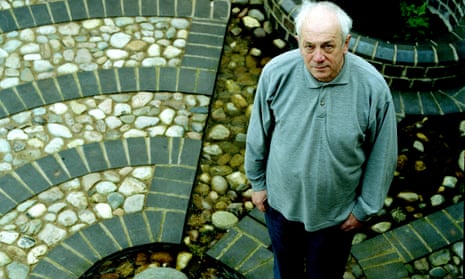In one of the illuminating essays in his collection The Voice That Thunders, Alan Garner concludes that the relation between the writer and the critic resembles that between the postman and the philatelist. Philately, he assures us, is a noble and worthwhile activity but it has little to do with the business of distributing the mail. Erica Wagner’s First Light, a festschrift of essays, reminiscences, poems and stories dedicated to Garner and his work, might therefore seem a philatelists’ annotated catalogue. Instead it shows that the job of the critic is that of a particular way of reading those hand-delivered letters.
Few writers are likely to be celebrated by such a diverse crowd as are gathered here in Wagner’s book. Other fiction writers appear – Margaret Atwood, Ali Smith, Philip Pullman, Neil Gaiman and Garner’s daughter, Elizabeth – but also Ronald Hutton, the historian of witchcraft, along with a clutch of storytellers, an excavation of archaeologists, a schoolmaster, a former archbishop of Canterbury and an astronomer. The range of those gathered here is testament to the breadth of Garner’s writings, the way they have syncretically compressed truths, merging, as few others have, a scientific and a mythopoeic understanding of human nature.
Between the summer of 1934 and the spring of 1935, Diana Wynne Jones, Susan Cooper and Garner were born, three writers who were children during the war and then, in the 60s and 70s, would be at the heart of a golden age of children’s literature. Six days before Cooper’s birthday, in May 1935 in the Forest of Dean, Dennis Potter was born; four years later, in Mossbawn, County Derry, Seamus Heaney saw the light.
With Cooper and Wynne Jones, Garner stands as one of the greatest makers of fantasy; with Potter and Heaney, he belongs to a select group of writers who turned their lives into legend, even myth, one they made available to others. Mossbawn, the Forest of Dean, Alderley Edge are known places, shared images of home. Every fan of Garner knows about his childhood illnesses, his being three times pronounced dead and fighting against the pronouncement; every reader knows of his attachment to and estrangement from one particular landscape, his displacement from a family tradition of craft expressed cunningly in the craft of writing.
Strangely, it is Potter who most chimes with Garner’s experience, as two men imbued with attachment to home, permeated with a purely local language, and then alienated from those roots, that tongue, by school success and Oxford. In very different ways, both dedicated their lives to knowing their place, tracing the path back to the deeper world they were estranged from. Potter’s The Singing Detective is even structured like a Garner novel, layering in one tale connected strands of story.
Garner began his career writing books in the vein of John Masefield’s The Box of Delights, and came to write like William Golding or Samuel Beckett. He has triumphed at fantasy and sculpted at least one masterpiece of realism, the extraordinary Stone Book Quartet. As many contributors to First Light tell us, his great achievement was to marry the mythic and the real. His children’s fantasy Elidor forges a world in transition, a boundary zone that fuses other realms with the slum clearances in postwar back-street Manchester.
History does not demolish myth; rather the relation between the two is the deepest way to understand our lives. In Elidor, Roland, the most imaginative child, is also the most truthful, for only he accepts and retains fidelity to the real experience of the marvellous.

Garner’s medium is deep time. He has a geological imagination, one that he applies to human identity too. He may be the last writer somehow informed by Sir Charles Lyell’s 19th-century classic, Principles of Geology; he taps into the earth. There are sediments of experience, layers in the rock. Events and the characters themselves are anagogical, figural: that is, they exist as rhymes to people, spirits, events from other stories, other lives.
There are sleepers deep in the earth, biding until the moment to awake. People look out of themselves across time, and perhaps into a timelessness beyond. In Garner’s most recent – I hope not last – work, Boneland (2012), his first two books interpenetrate the story. The novel is coalesced around the difference and the link between a Paleolithic man and a 21st-century astronomer, as well as the connection between the adult scientist and the child he was, and perhaps still is.
Garner’s vision is larger than that of most realist writers. Realism for him includes the awareness of our place in vastness. Viewed from the parish of Alderley, the Earth actively is a planet to him, turning in infinity. The silence of interstellar spaces, of rock and cave, informs the books, though the magic is that the silence is a speaking one.
Many of the contributions in Wagner’s highly enjoyable book reveal as much about their authors as they do about Garner himself; it’s precisely in his impact on individual readers that his books work their magic. Bel Mooney suggests his stories can heal and yet remain fully alive to the conflict, threat, unease and despair intrinsic to life.
In the past, he has spoken of the essential selfishness of the writer’s life. Yet he knows and has himself shown how that commitment to a private endeavour nonetheless can be transmuted into an act of communication. Over and over, each essay or memoir here, each poem, reaches the point where the writer explains how reading Garner’s books changed them.
His writing has presented opportunities, granted permission, offered a reprieve. Wagner’s book becomes not just a tribute to Garner, but a homage to the power of writing and storytelling. Books unearth something in us. They bring something to light.
Garner’s fictions often turn on the contrast between underground and the heights, caves and the hill that covers them. The Weirdstone books are somehow claustrophobic, shut in. The child heroes, Susan and Colin, are persecuted, pursued, in need of rescue. Coming to the glorious Elidor after them, you feel with relief the openness of air; there’s a sea breeze, an expansiveness that connects worlds.
In The Stone Book, from a steeple the child Mary sees a landscape filled with churches. Taken beneath the earth by her father, she finds a secret site visited only by generations of Garners, a prehistoric place of worship, with a cave painting of a bull and the print of a human hand, precisely the same size as her own. Above is brightness and sky and cloud and the gold of the weathercocks spinning; under is dark and quiet and all but hidden. There the human relation to time is etched or printed on to stone.
In the 1970s, there was controversy as to whether Garner was a children’s author or not. I first came to his books one summer in my mid-40s, picking up The Weirdstone of Brisingamen from a shelf in a house I was staying in, and found myself so entranced that I kept going through one after another of them until I reached Boneland, happily (coincidentally?) published that autumn.
Garner’s early works certainly appeal to children, but they also appeal to the children and adolescents latent in his adult readers, there like strata in the rock, the handprint left behind long ago.

Comments (…)
Sign in or create your Guardian account to join the discussion